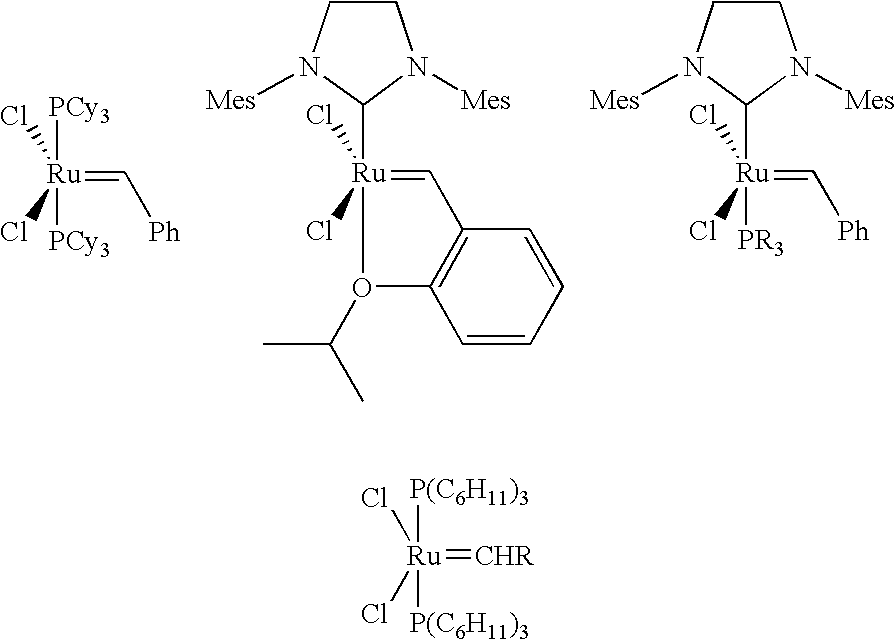Method for preparing poly(dicyclopentadiene)
a technology of dicyclopentadiene and polymerization method, which is applied in the field of polymerization dicyclopentadiene, can solve the problems of compromising polymer physical properties, inability to fully convert monomers to polymers, and high cost of sensitivity to sunlight and embrittlement of polymers, and achieves low odor products, easy to use, and low residual monomer content of starting polymers.
- Summary
- Abstract
- Description
- Claims
- Application Information
AI Technical Summary
Benefits of technology
Problems solved by technology
Method used
Image
Examples
example 1
[0065] A polymerization vial is maintained under dry nitrogen in a drybox. The vial is charged with 209 mg (0.61 mmol) of WOCl4 and 50 mL of toluene. A deep red color is produced after stirring for 10 minutes. 2.237 mL (12.25 mmol) of diallyldimethylsilane is added and stirred in for 5 minutes. 50 mL of a 1.69 M solution of dicyclopentadiene in toluene (84.5 mmol dicyclopentadiene) is then added, and the vial is stirred for 4 hours. The vial is then removed from the dry box and 20 mL of a 2% NaOH / MeOH solution is added. The resulting solution is stirred overnight, placed in a separatory funnel and washed four times with 100 mL of water. The solution is then concentrated to 75 mL on a rotary evaporator. 200 mL of methanol is added and the mixture stirred vigorously for several days to produce a viscous oily polymer. The solvent is decanted and the oil washed 4 times with 40 mL methanol. The product oil is then pumped down on a high vacuum line for several days. Yield is 10.5 g (81.5%...
example 2
[0066] Example 1 is repeated, reducing the amount of diallyldimethylsilane to 6.12 mmol. 11.1 g (93.3% yield) of a white powdery solid is obtained. The product has a number average molecular weight of 3,467.
example 3
[0067] Example 1 is again repeated, this time reducing the amount of diallyldimethylsilane to 3.06 mmol. 10.6 g (91.4% yield) of a white powdery solid is obtained. The product has a number average molecular weight of 6,709.
PUM
| Property | Measurement | Unit |
|---|---|---|
| Fraction | aaaaa | aaaaa |
| Fraction | aaaaa | aaaaa |
| Fraction | aaaaa | aaaaa |
Abstract
Description
Claims
Application Information
 Login to View More
Login to View More - R&D
- Intellectual Property
- Life Sciences
- Materials
- Tech Scout
- Unparalleled Data Quality
- Higher Quality Content
- 60% Fewer Hallucinations
Browse by: Latest US Patents, China's latest patents, Technical Efficacy Thesaurus, Application Domain, Technology Topic, Popular Technical Reports.
© 2025 PatSnap. All rights reserved.Legal|Privacy policy|Modern Slavery Act Transparency Statement|Sitemap|About US| Contact US: help@patsnap.com



